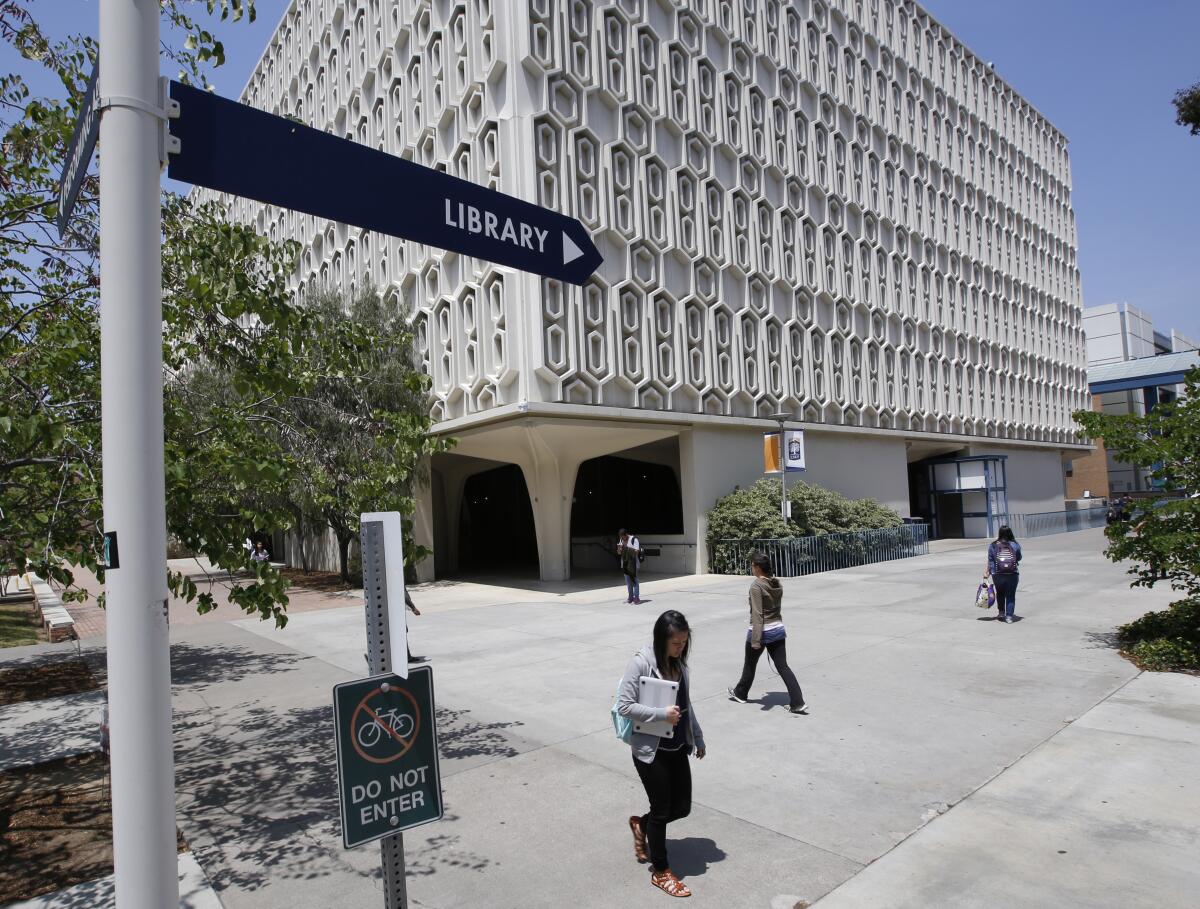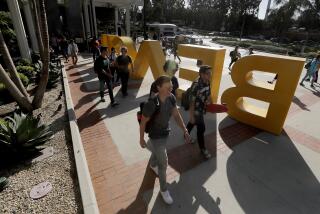Cal State details potential tuition increases amid massive funding gap

- Share via
California State University officials are projecting tuition increases of hundreds of dollars per student as the 23-campus system attempts to close a funding gap of almost $1.5 billion.
The tuition proposal, submitted to the California State Student Assn. last month, outlined three models, with the increase for each undergraduate ranging from $174 to $462 in the first year and each subsequent year bringing another increase.
The $1.5-billion shortfall was detailed in a 70-page report presented to the university’s Board of Trustees. In the 2021-2022 school year, there was a 14% disparity between what the system spent and what it actually cost to educate students, pay salaries and keep campuses running, the report said.
Officials say that despite the proposed tuition increases, which would start in the 2024-2025 school year, a Cal State education will remain affordable — a key value for a system that prides itself as an agent of social mobility.
But for students already struggling to get by, even a small increase could be a significant burden.
Nearly half of the system’s undergraduates receive Pell Grants — federal money awarded to students who demonstrate exceptional financial need — and nearly one-third are the first in their families to attend college.
Current undergraduate tuition is $5,742 per year, which has remained mostly flat over the last decade and is among the lowest in the country, according to the system.
Under the proposal, about 60% of CSU students would still have their full tuition covered by financial aid.
A new report reviewing Cal State’s finances found the university system is coming up 15% short of its total costs, leaving an almost $1.5-billion funding gap. The report recommends implementing tuition increases.
Cal State trustees are expected to vote on the proposed tuition increases, which are projected to generate $333 million to $782 million in revenue by 2028-2029, in the fall.
“This is a lot like climate change,” said Julia Lopez, the CSU Board of Trustees member who helped lead the team that worked on the report. “If we don’t heed the warning signs right now, we’re going to find ourselves in a world of hurt down the line.”
Miya Haley, a spokesperson for the California State Student Assn., said the organization, which represents the system’s 460,000 students, is still reviewing the proposal and gathering input from students.
“While we cannot provide an immediate response regarding the proposal, the CSSA remains committed to an affordable and accessible CSU for all students,” Haley said in a statement.
One of the proposed options sets slightly different increases for incoming and continuing students. In 2024-2025, new students would experience a 5% increase over what they would have paid the previous academic year, amounting to $288 more.
Continuing students would face a 3% increase, or $174 for each undergraduate. Another 3% increase would occur each year after that.
Under a second option, tuition would increase 6% every year for all students. Each undergraduate in 2024-2025 would pay an additional $342. By 2028-2029, full-time undergraduates would pay $7,682 in annual tuition.
The third option calls for an 8% annual increase for all students. For undergraduates in 2024-2025, that would mean a $462 increase. By 2028-2029, full-time undergraduate students would pay $8,444 a year.
During the May trustees meeting, Lt. Gov. Eleni Kounalakis urged fellow board members to be mindful of burdening students with increased costs.
“Making any kind of decision, particularly on the cost of attendance, has to include a thorough understanding of what it will do to the student body, what it will do to our graduation rates … what it will do for accessibility and opportunity that’s provided to our students,” she said.
Since the mid-1990s, the state’s share of CSU’s operating budget has dropped to 60% from 80%. The state has fully funded CSU’s annual budget requests only once in the last decade, at the same time that costs were rising due to inflation.
The state has taken steps in recent years to help the system: Gov. Gavin Newsom has promised an annual 5% base funding increase through 2026-2027 in exchange for commitments to expand access and equity.
But that would not reduce the tuition increases and would still leave a huge funding gap, officials say.
The proposal to the student association laid out the stakes if the system doesn’t find a way to pay for its needs — a “persistently underfunded” system could mean fewer course offerings, fewer student services and a longer timeline to graduation.
The system already suffers from a severe backlog of infrastructure needs and has faced intense pressure from labor unions in recent months to raise pay for mechanics, plumbers, electricians and others who keep the buildings running.
More to Read
Sign up for Essential California
The most important California stories and recommendations in your inbox every morning.
You may occasionally receive promotional content from the Los Angeles Times.












